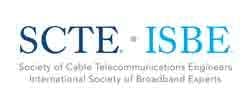As part of the regular standards review process, the American National Standards Institute has approved several SCTE standards around cable modems, data service and VoIP service.
- ANSI/SCTE 24-1 2016, "IPCablecom 1.0 Part 1: Architectural Framework for the Delivery of Time Critical Services Over Cable Television Networks Using Cable Modems," provides the architectural framework to enable cable operators to provide time critical services over their networks that have been enhanced to support cable modems.
- ANSI/SCTE 24-02 2016, "IPCablecom 1.0 Part 2: Audio Codec Requirements for the Provision of Bi-directional Audio Service Over Cable Television Networks Using Cable Modems," specifies the audio (voice) codes that are to be used in the provisioning of bi-directional audio services over cable distribution networks using IP technology (i.e., IPCablecom service). The standard also addresses interfaces between IPCablecom client devices for audio communication.
- ANSI/SCTE 24-3 2016, "IPCablecom Part 3: Network Call Signaling Protocol for the Delivery of Time-Critical Services over Cable Television Using Data Modems," describes the NCS profile of an application programming interface (MGCI) and a corresponding protocol (MGCP) for controlling embedded clients from external call control elements.
- ANSI/SCTE 24-4 2016, "IPCablecom Part 4: Dynamic Quality of Service for the Provision of Real-Time Services over Cable Television Networks Using Cable Modems," addresses requirements for a client device to obtain access to IPCablecom network resources. In particular, it specifies a mechanism for a client device to request a specific quality of service from the DOCSIS network. Examples illustrate the use of the specification.
- ANSI/SCTE 24-5 2016, "IPCablecom Part 5: Media Terminal Adapter (MTA) Device Provisioning Requirements for the Delivery of Real-Time Service over Cable Television Using Cable Modems," is limited to the provisioning of an IPCablecom 1.0 embedded-MTA device by a single provisioning and network management provider.
- ANSI/SCTE 24-6 2016, "IPCablecom Part 6: IPCablecom Management Information Base (MIB) Framework," describes the framework in which IPCablecom MIB (management information base) modules are described. It provides information on the management requirements of IPCablecom compliant devices and functions and how these requirements are supported in the MIB modules.
- ANSI/SCTE 24-7 2016, "IPCablecom Part 7: Media Terminal Adapter (MTA) Management Information Base (MIB) Requirements," describes the IPCablecom 1.0 MTA MIB requirement.
- ANSI/SCTE 24-8 2016, "IPCablecom Part 8: Signaling Management Information Base (MIB) Requirements," describes the IPCablecom Signaling (SIG) MIB requirements.
- ANSI/SCTE 24-9 2016, "IPCablecom Part 9: Event Messaging Requirements," identifies and defines specifications for delivery of enhanced communications services using packetized data transmission technology over the cable hybrid fiber/coax (HFC) data network running the DOCSIS protocol.
- ANSI/SCTE 24-10 2016, "IPCablecom Part 10:Security Specification," defines the IPCablecom security architecture, protocols, algorithms, associated functional requirements and any technological requirements that can provide for the security of the system for the IPCablecom network.
- ANSI/SCTE 24-11 2016, "IPCablecom Part 11: Internet Signaling Transport Protocol (ISTP)," addresses the protocol to implement SS7 signaling interconnection in a distributed IPCablecom PSTN gateway architecture. Specifically, it defines the messages and procedures for transporting SS7 ISUP, TCAP, and TUP messages between the IPCablecom control functions (media gateway controller and call management server) and the SS7 signaling gateway.
- ANSI/SCTE 24-12 2016, "IPCablecom Part 12: Trunking Gateway Control Protocol (TGCP)," describes the TGCP profile of an application programming interface (MGCI) and a corresponding protocol (MGCP) for controlling trunking gateways from external call control elements.
The standards are available at http://www.scte.org/SCTE/Standards/Download/SCTE/Standards/Download_SCTE_Standards.aspx.
